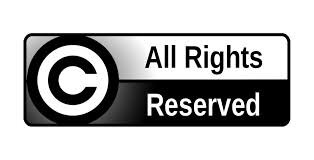Author: Sarah Nadon – Law Student
Edited By: Ryan Carson
In 2018 when the endorsement deal ended, Nike and Leonard parted ways, and Leonard demanded a court to declare that he is the sole owner of the logo and that Nike fraudulently registered the logo with the United-States Copyright Office in Washington D.C.3 While Leonard was filing his lawsuit, Nike disputed Leonard’s story and sued him for copyright infringement, breach of contract and fraud.
Litigation originally began in Southern California but moved to the U.S. District Court for the District of Oregon, giving Nike a home-court advantage. Judge Michael Mosman presided over the case.4 On April 22, 2020, Mosman J. heard Nike’s Motion for Judgement. Mosman J. stated that ownership over the “Klaw” design turns on the Nike contract entered into by Leonard. Paragraph 8 of the contract states:
OWNERSHIP OF NIKE MARKS, DESIGNS & CREATIVES.
(a) [Leonard] acknowledges that NIKE exclusively owns all rights, title and interest in and to the NIKE Marks and that NIKE shall exclusively own all rights, title and interest in and to any logos, trademarks, service marks, characters, personas, copyrights, shoe or other product designs, patents, trade secrets or other forms of intellectual property created by NIKE . . . or [Leonard] in connection with this Contract;5
The judge held that the Nike contract established Nike’s ownership of the logo because the “klaw” logo was (1) a new piece of intellectual property and (2) created “in connection” with the Nike contract.
While throughout the case, Nike asserted that this was a tale of two images, Leonard consistently refers to the “Leonard Logo.”6 This is because Leonard’s theory is that no new intellectual property was created over the course of the Nike contract; instead, the “Klaw” logo is the finished result of mere modifications to the logo Leonard has created independently of Nike. The judge rejected that theory during oral arguments.
Next, the judge analyzed whether the “Klaw” design was created “in connection with” the Nike contract. If the logo was created in connection with the contract, Nike owns it. Leonard’s argument was that the contractual language “in connection with” is ambiguous and unconvincing.7 The purpose of the Nike contract was to pay Leonard for “the use of [Leonard]’s personal services and expertise in the sport of professional basketball and [Leonard]’s endorsement of the Nike brand and use of Nike products.”8 According to Leonard, at some point during the contract, Nike wanted to create a logo for the merchandise to be sold under Leonard’s Nike contract. The “Klaw” logo was created and affixed to merchandise that Leonard wore and endorsed and Nike sold.9 Not only was this activity done in connection with the Nike contract, but it also represented the entire point of the Nike contract. Since the logo was created under the Nike contract for the purpose of endorsing both Nike and Leonard, Nike owns the design and the right to register a copyright for it.
Furthermore, the judge granted in part and denied in part Nike’s counterclaims, which included a declaratory judgement of copyright ownership, copyright infringement, copyright right cancellation for fraud on the copyright office, breach of contract paragraph 8, breach of contract paragraph 13 and breach of contract paragraph 21.10 The judge granted breach of contract under paragraph 21 as the contract states that any dispute arising under the contract should be litigated in an Oregon court. Leonard filed his action in the Southern District of California.
Nike was granted copyright ownership and, in part, breach of contract but denied judgement on other counterclaims. Leonard’s lawyers are currently weighing their options on what to do next.
Disclaimer
The content on this web site is provided for general information purposes only and does not constitute legal or other professional advice or an opinion of any kind. Users of this web site are advised to seek specific legal advice by contacting members of Carson Law, Carson IP, or their own legal counsel regarding any specific legal issues. Carson Law does not warrant or guarantee the quality, accuracy or completeness of any information on this web site. The articles published on this web site are current as of their original date of publication, but should not be relied upon as accurate, timely or fit for any particular purpose.
References
1 Sports Illustrated, News Release, “Kawhi Leonard Loses Copyright Lawsuit Against Nike Over Logo (April 23, 2020) https://www.si.com/nba/2020/04/23/kawhi-leonard-loses-lawsuit-against-nike.
2 Ibid.
3Ibid.
4 Ibid.
5Nike Contract [16-1] at 7.
6Kawhi Leonard v Nike Inc., ( D. Or. 2020)
7Ibid.
8 Ibid.
9Ibid.
10Ibid.
.


